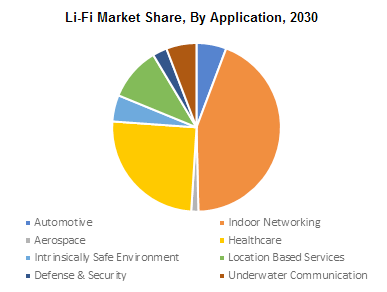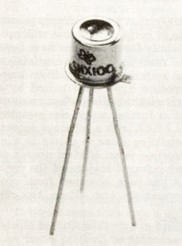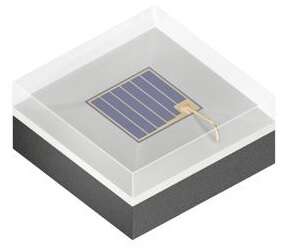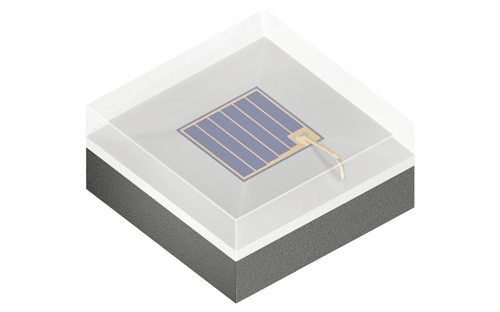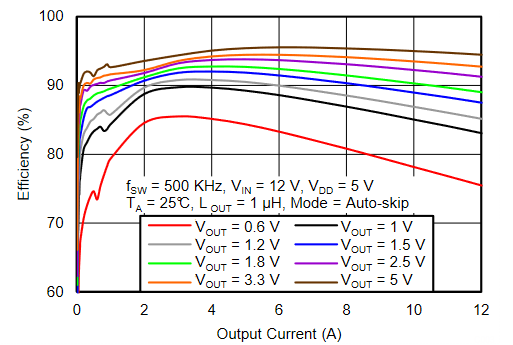
LED lighting solutions protect wildlife
- LEDS
- 2023-09-23 23:13:47
The adage about two sides to every coin holds true in even the most difficult circumstances, and the one we’ve collectively been living through is no exception. COVID-19 has forced humans to stay indoors these past few months, which has been beneficial for the air, water, and wildlife.
One thing that hasn’t changed despite our absence is the outdoor lighting installed to facilitate human activities at night, which, if my neighborhood is any indication, continues to operate even though no one is there. Artificial lighting results in behavior disruption, injury, and death to thousands of birds, reptiles, invertebrates, and mammals each year. Recognizing that there is no substitute for a naturally dark environment, there is a growing body of research into how to implement lighting that meets the needs of humans while minimizing adverse effects to animals.
The inherent differences between the human visual response and the behavioral response and visual sensitivity of animals opens the door to the identification of spectra for outdoor lighting that minimizes detrimental impacts to wildlife while still providing adequate illumination for humans. A research article entitled “Rapid assessment of lamp spectrum to quantify ecological effects of light at night” provides some insight into the implications of the widespread adoption of LED lighting in terms of predicting the effects of the spectral power densities (SPDs) of various lighting products on wildlife.
The study looked at the impact of 24 artificial light sources (of various lighting technologies, including LED), on the behavior, visual sensitivity, and physiological response of insects, sea turtles, the Newell’s shearwater bird, and juvenile salmon against four parameters: correlated color temperature (CCT), color rendering index (CRI), sky glow, and melatonin suppression (blue light content). Of these parameters, CCT appeared to have the strongest correlation to wildlife impacts, with warmer CCTs, in general, resulting in fewer adverse effects to the studied species. This conclusion has significant implications for LED lighting installations because, unlike legacy lighting technology (e.g., low-pressure sodium), the SPD of an LED product can be custom-tailored to a particular application.



There is a shortcoming to the use of CCT as the lone metric for evaluation of potential impacts in that light sources with significantly-different SPDs can still have the same CCT. Because of this, the use of different predictive metrics was proposed, including the percentage of visible light below a given wavelength threshold, the human melanopic response (defined as the percent difference of the sensitivity of intrinsically photosensitive retinal ganglion cells to an increase in illuminance from a test source as compared to a standard D65 source), and the melanopic to photopic (M/P) light ratio.
Additional research conducted on the same four animal groups concluded that while the melanopic response and M/P metrics were generally the most useful in predicting impacts to wildlife, CCT appeared to provide better predictive value for insects. This again has implications specific to LED lighting, as the use of shorter wavelengths in the violet range enable a light source to optimize melanopic response and M/P ratio, while still avoiding the blue light associated with undesirable melatonin response in humans. However, this violet light is extremely attractive to insects, resulting in disruption to normal behavior as the graph below illustrates (Figure 1).
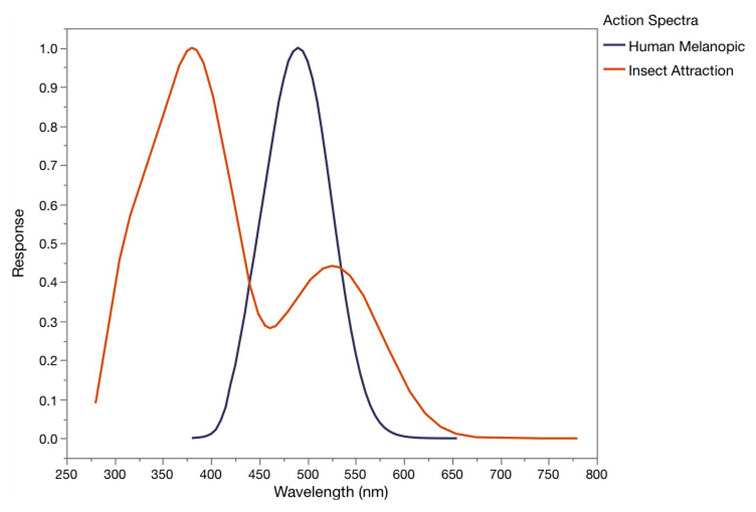
While research into the impacts of artificial lighting on specific species is ongoing, the bottom line for minimizing harm cannot be disputed: low CCT lighting, although straight-forward and simple, is not a one-size-fits-all solution. In addition to an appropriate CCT, projects must emphasize timing, intensity, and distribution, that is, provide light only when needed, at only the needed intensity, and directed only where needed.
A number of LED-based outdoor lighting projects designed with these principles in mind have been implemented recently. One the most publicized adverse wildlife impacts involves sea turtle hatchlings. Upon emerging from their nests in the sand, they are drawn to the sea by the light of the moon shining upon it, but artificial lights easily disorient the hatchlings, often leading to their deaths.

A recent installation located in Gulf Shores, AL is an example of the measures that can be taken to mitigate impacts (Figure 2). Pole lighting along the shoreline features a circular shield at the top (for dark sky considerations) and an additional half-shield that directs the light away from the sea. Further, the LED lighting is a low CCT amber to differentiate it from the cool-white of the moon. Other installations have focused on the well-being of birds, bats, and even polar bears, each using LED products with output spectra selected specifically to minimize harmful effects.
—Yoelit Hiebert has worked in the field of LED lighting for over 10 years and has experience in both the manufacturing and end-user sides of the industry.
Related articles:
Insect and bird behavior is influenced by LED lightsWeighing the costs of LED street lightsPeople not immune to health impact of LEDsLearning and working in the era of COVID-19LED lighting solutions protect wildlife由Voice of the EngineerLEDSColumn releasethank you for your recognition of Voice of the Engineer and for our original works As well as the favor of the article, you are very welcome to share it on your personal website or circle of friends, but please indicate the source of the article when reprinting it.“LED lighting solutions protect wildlife”

